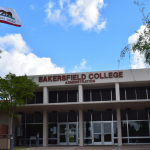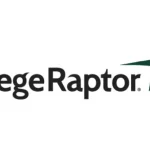The higher education landscape has shifted dramatically between March 2020 and March 2021.
As the pandemic forced a shift to a more virtual environment, it also prompted a flood of existential questions about the value and sustainability of the higher education model.
These questions are not new. For decades, the sustainability of higher education costs and increasing student debt have been a source of significant concern. And in recent years, competition for students has ramped up considerably. Collectively, these trends have contributed to a backdrop of instability for an industry long-known for its stability.
COVID-19 has only exacerbated the level of urgency and need to address these challenges – for nearly every college and university, regardless of type or size.
There are four specific pressures that are at the core of this shift, and they are converging to drive a greater level of uncertainty than ever before.
The first two are external/macro factors, and we will focus on these two in this post. The latter two are internal or institutional factors. We will focus on them as part of a subsequent post in the near future.
Pressure 1: The Economic and Practical Impact on Students from the Global Pandemic
The global pandemic has significantly disrupted millions of individuals and families. The tumult and economic fallout from the shutdowns led to a surge in unemployment and a focus on financial survival for many.
Some notable statistics:
- 53% of families say their finances have been affected by pandemic
- Freshman enrollment at 4-year institutions in Fall 2020 declined 13% from previous year
- Public 2-year institutions are reporting an extraordinary 22.7% drop in first-time beginning student enrollment
As these statistics demonstrate, the pandemic has had an immediate and significant impact on college enrollment.
Pressure 2: Changing Student Sentiment and Demographics
Student Sentiment
In the short-term, we just don’t know what the college rebound curve looks like yet. Colleges have been limited in their ability to provide in-person instruction. The value proposition for online learning is uncertain for many students.
The longer-term outlook also requires serious reflection. It will take time for institutions to pivot.
Student Demographics
There are also some key demographic factors that are looming over higher education. These trends are worth keeping an eye on, especially population declines and the student debt crisis. While some of these are more immediate than others, they all impact the longer-term outlook for higher education.
- Global fertility rates have decreased 50% since 1960, potentially leading to fewer students and presenting fiscal challenges.
- U.S. population trends project a more than 10 percent reduction in college enrollments by the end of the 2020s
- Americans owe over $1.71 trillion in student loan debt, spread out among about 44.7 million borrowers. That’s about $739 billion more than the total U.S. credit card debt.
- 17% of all borrowers with federal loans are severely delinquent.
Collectively, these trends are putting additional pressure on colleges as they seek to meet their enrollment targets.
Key Takeaways
What we have here is a two-fold external challenge.
In the immediate aftermath of the COVID-19 pandemic, most colleges will seek to spring back to their pre-pandemic enrollment numbers and targets. Some will indeed spring back, while others will have a slower recovery. Economists often talk about a “V-shaped recovery” versus a “U-shaped recovery” when coming out of an economic recession. We anticipate the shape of the enrollment recovery will vary by institutions, with some recovering faster than others.
In the longer-term, there are macro trends that are working against traditional college enrollment. Simply put, there will be a smaller pool of traditional students to draw from and an increased concern among students about the value of the traditional college experience.
Together, these short and long-term trends will put pressure on colleges, and most importantly, the changes will drive increased competition for students.
For more information on the 4 Pressures Driving Uncertainty in Higher Education, download our infographic.
















